#sckell
Explore tagged Tumblr posts
Text
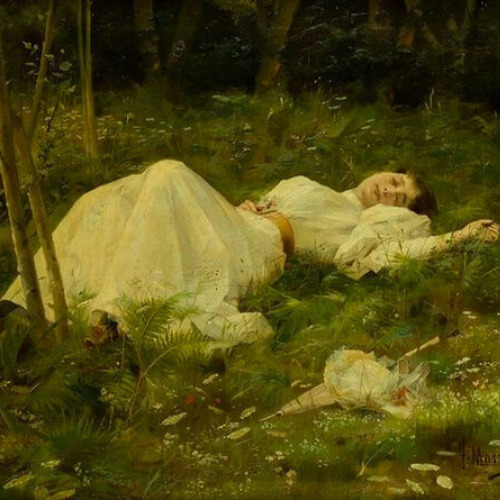
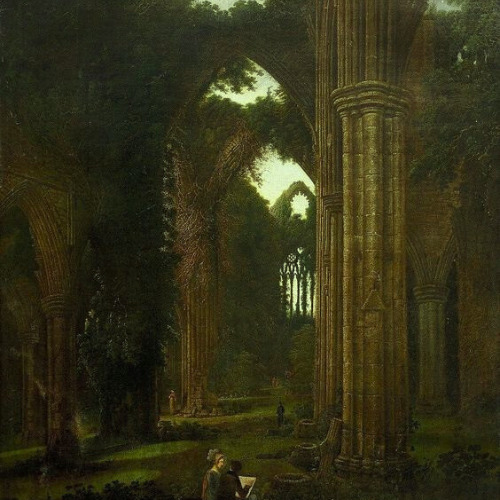
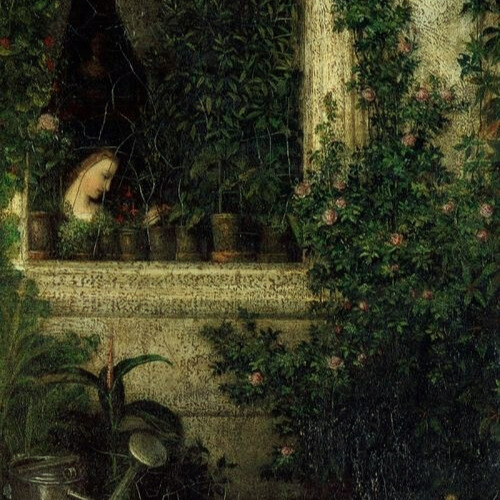

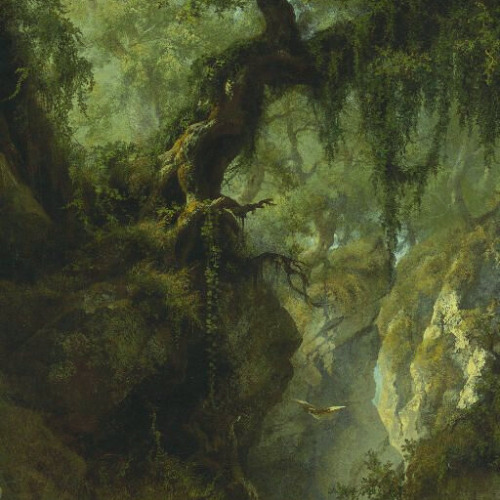
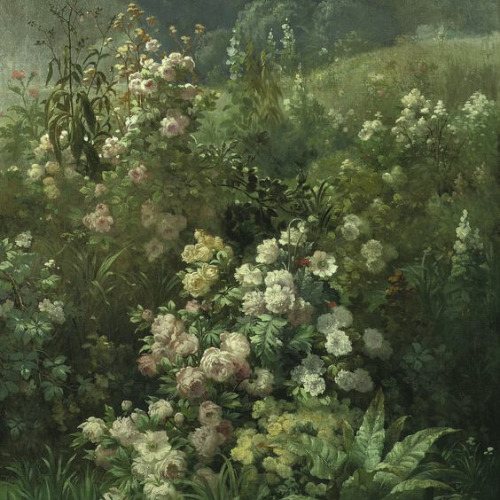

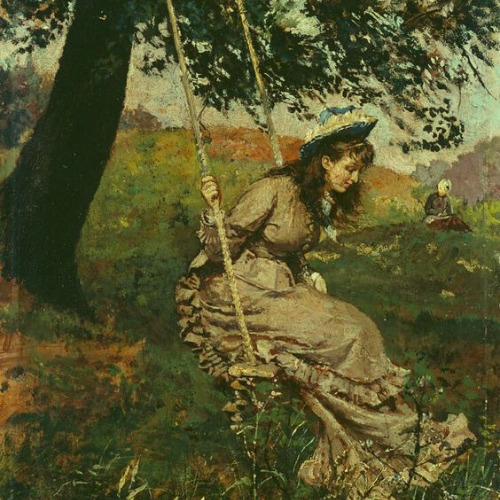
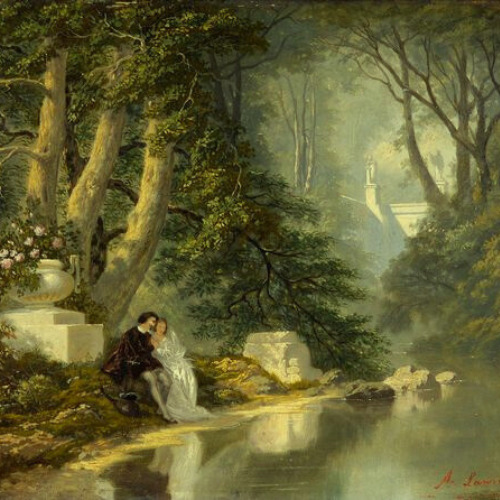
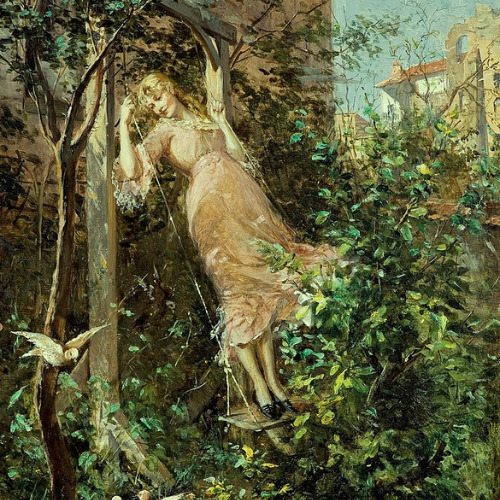
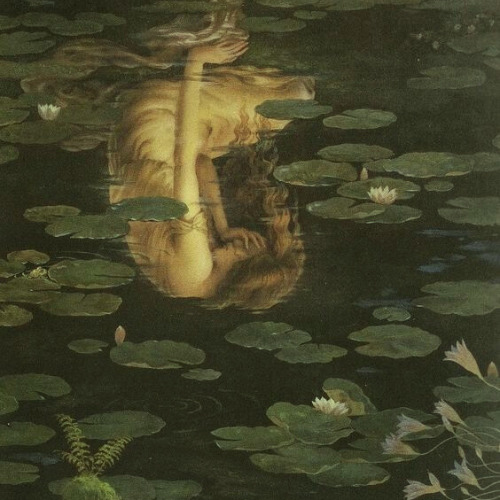

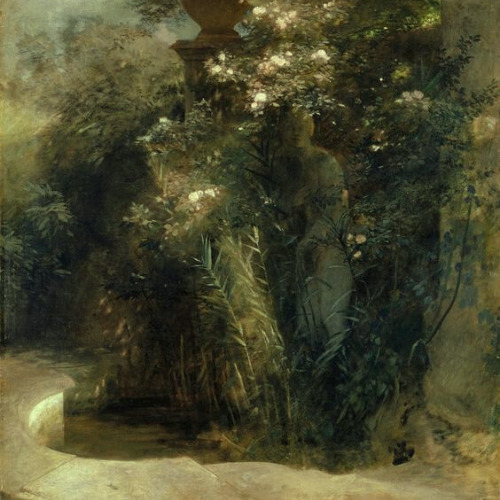
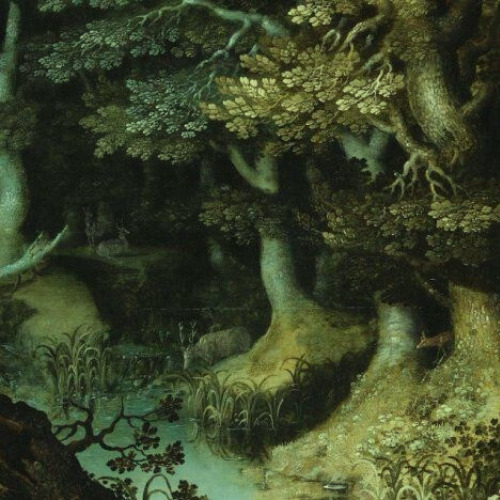

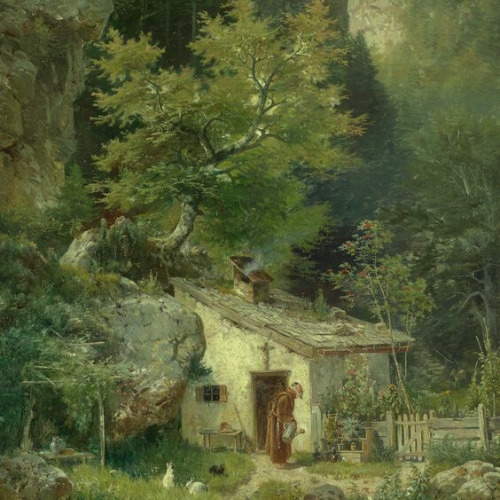
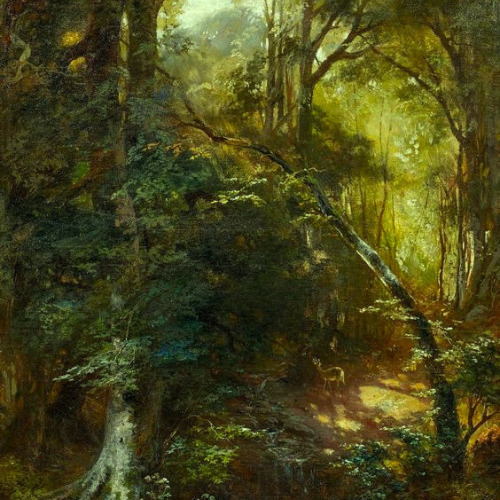


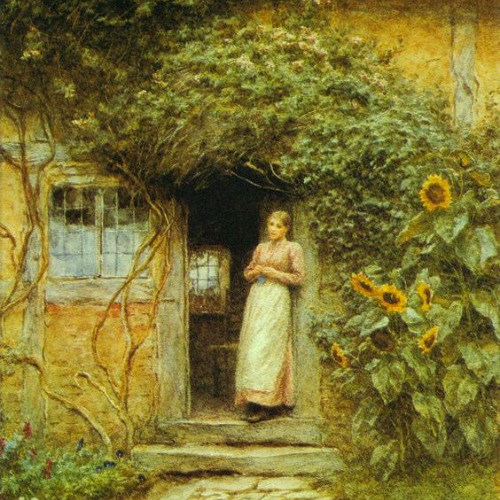
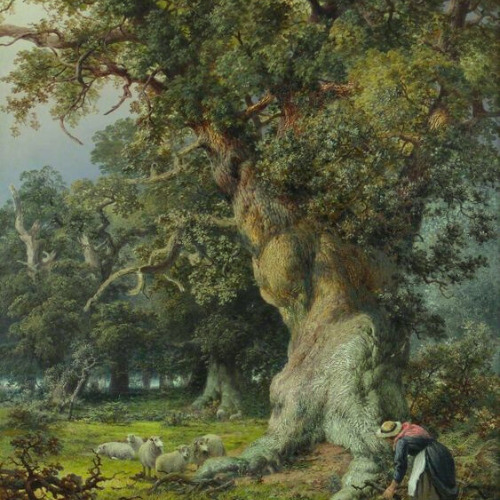
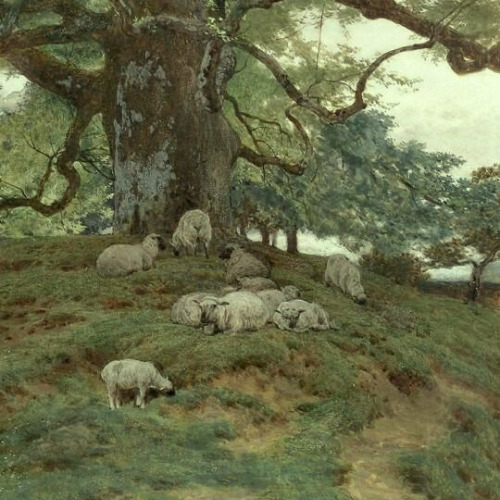

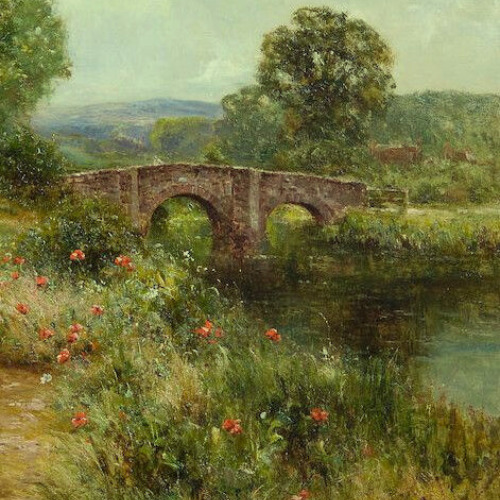
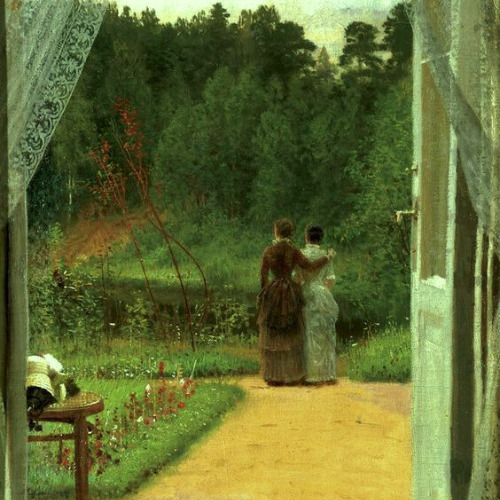

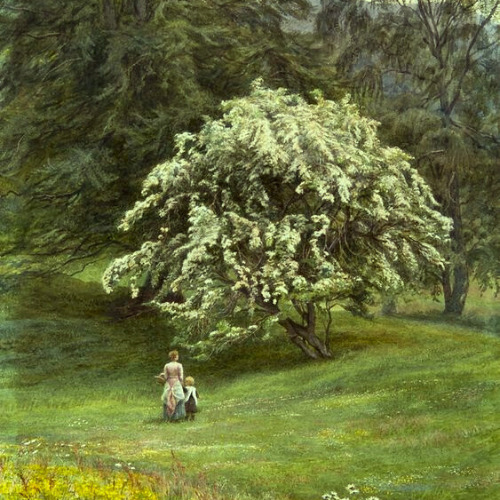
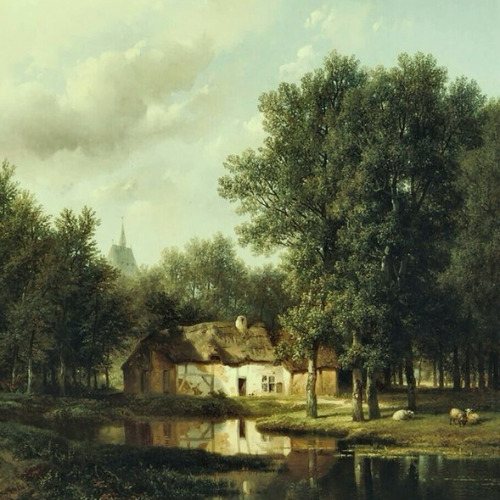
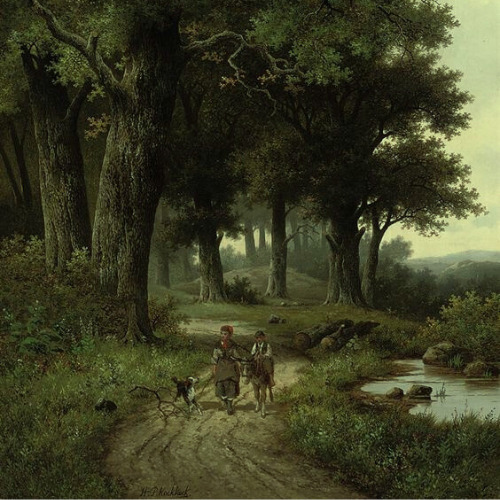

art aesthetics: cottagecore
#artist is francesc masriera#artist is samuel colman#artist is karel purkyne#artist is jan frederik pieter portielje#artist is giuseppe camino#artist is alfred petit#artist is gelhay edouard#unknown artist#artist is albert f laurens#artist is paul mewart#artist is kinuko y craft#artist is peter gardiner#artist is arnold bocklin#artist is cirosata bolarc#artist is hermann heinrich#artist is ludwig sckell#artist is carl ebert#artist is robert zund#artist is robert payton reid#artist is helen allingham#artist is frederick henry henshaw#artist is john dawson watson#artist is gustav marx#artist is ernest walbourn#artist is ivan nikoaevich kramskoy#artist is henry john yeend king#artist is edith martineau#artist is peter ludgwig kuhnen#artist is hendrik pieter koekkeok#artist is emil jakob schindler
653 notes
·
View notes
Text
LUDWIG SCKELL
German Painter
1851-1910
Mountain town

#LUDWIG SCKELL#artist painter#german painter#original art#art#mountain town#art work#art style#art colors#oil on linen#oil paint#ilustration painter#frank murdoff#ooctoopussy#xpuigc#xpuigc bloc
14 notes
·
View notes
Text
Jardines del Palacio de Schwetzingen (Baden-Wurtemberg) *****
"Schwetzingen fue creado en una época de transición entre el estilo barroco y el neoclásico, y, a diferencia de lo habitual, se respetaron siempre las estructuras existentes. Esto convierte al lugar en un espacio de marcados contrastes, un verdadero viaje a través de la historia de los jardines."
Abstract: A spectacular baroque garden, a Moorish-style mosque, a picturesque artificial ruin, a marble bathhouse and a magnificent temple of Apollo are just some of the things to be found in the spectacular historic gardens of Schwetzingen Castle. Conjunto histórico Aunque su origen se remonta a 1350, el actual palacio y los jardines de Schwetzingen fueron concebidos en el siglo XVIII, durante…
#Carl Theodor#Casa de Baños (Badhaus)#cuenca de los pájaros#cultura clásica#DIE GARTENMOSCHEE#dioses fluviales Rin y Danubio.#european best gardens#Friedrich Ludwig Von Sckell#historia de la arquitectura y los jardines#jardín barroco y rococó#Jardín turco con Mezquita#Jardines Baden-Wurtemberg#jardines de Schwetzingen#Jardines históricos#mejores jardines alemania#Mezquita roja#Mitología en el jardín#most beautiful garden to visit in europe#Nicolas de Pigage#poeta griego Esopo#Principes Electores Palatinos#Schlossgarten Schwetzingen#temas mitológicos y filosóficos#Templo de Apolo#Templo de la Botánica#Templo de Minerva#Trampantojo#Wasserspielehaus#Zirkelbauten#Zirkelhäuser
0 notes
Text
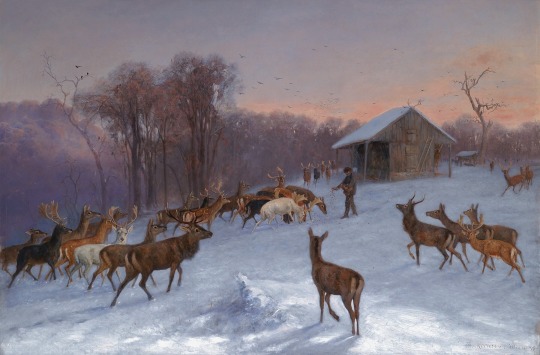
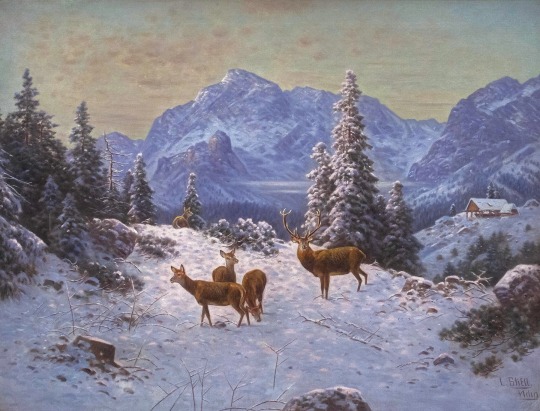
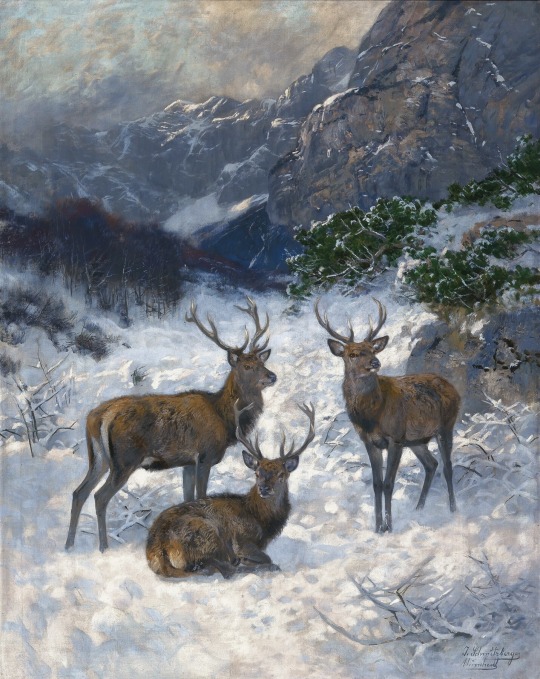
Feeding the Deers in Winter by Wilhelm Richter ❅ A Deer Herd in Winter by Ludwig Sckell and Josef Schmitzberger
#painting#art#art history#oil on canvas#oil painting#winter#wintercore#light academia#winter academia#december#deer#deers#snow#snow aesthetic#snowcore#classical art#classic academia#artist#artblr#nature#naturecore#art gallery#artists#art community#aesthetic#academia aesthetic
525 notes
·
View notes
Text
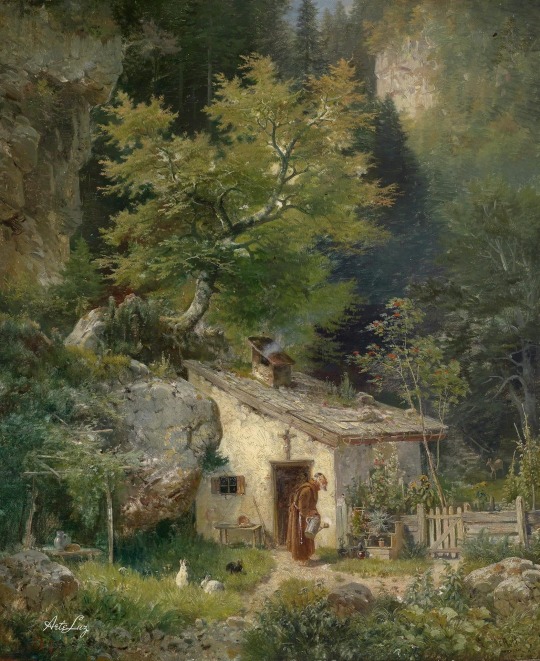
El ermitaño, by Ludwig Sckell (1833-1912)
#xix art#xix#xix century#art#painting#classic art#illustration#traditional illustration#catholic#catholiscism#catholic church
24 notes
·
View notes
Text
The Palace of the nymphs

Nymphenburg Palace (Schloß Nymphenburg in German) was commissioned by the Bavarian Elector Ferdinand Maria von Wittelsbach and his wife, Enrichetta Adelaide of Savoy, in 1664 to commemorate the birth of their son Maximilian II Emanuel.
The architect in charge of the project, the Italian Agostino Barelli, is considered to have introduced the Italian Baroque to Bavaria. Before taking charge of the Nymphenburg, he built the Theatine Church in Munich, begun in 1663. The central pavilion of the palace was completed in 1665. His involvement in both projects ended in 1674, when he returned to Bologna, where he is known to have been baptised in 1627.
Prince Maximilian II Emanuel ordered the extension of the palace from 1701, with two wings to the north and south of the pavilion designed by Barelli. The south wing was later enlarged again to make room for the stables, where today there is a carriage museum. An orange plantation was added to the north wing.
However, of the monumental ensemble represented by the building and its halls and rooms, which gradually incorporated decorative elements in rococo and neoclassical styles, the surrounding gardens, which cover an area of some 800,000 m2, are particularly noteworthy.
The Nymphenburg Park was originally designed in the Italianate style, but was redesigned in the French style by Dominique Girard in the first quarter of the 18th century, and in the 19th century it was redesigned again in the English style by Friedrich Ludwig von Sckell. This is not to be confused with the Englischer Garten (English Gardens), a public park in the middle of Munich.
Over the course of two centuries of alterations, various buildings were erected within the park. First, in the 18th century. The Pagodenburg houses two pavilions with Dutch-tiled decorations on the first floor and Chinese-style on the second; the Baroque Badenburg has a banqueting hall and a bath with a swimming pool; the Magdalenenklause is a faux ruin that was used as a place of meditation; and the Amalienburg is a rococo hunting lodge. The Monopteros, a circular temple in neoclassical style, was built as early as the 19th century.
Today, to the north of the park, you can visit the Munich Botanical Garden, which was created in 1914. The first botanical garden (Alter Botanischer Garten in German) in the Bavarian capital opened its doors in 1809 near Karlsplatz, in the historic centre of the city.
4 notes
·
View notes
Text
Schloss Nymphenburg · München

Schloss Nymphenburg · München · Baudenkmal Kunst Garten
Schloss Nymphenburg in München hat eine reiche und faszinierende Geschichte, die bis ins 17. Jahrhundert zurückreicht. Das Schloss wurde ursprünglich als Geschenk des bayerischen Kurfürsten Ferdinand Maria an seine Frau Henriette Adelaide von Savoyen anlässlich der Geburt ihres Sohnes Max Emanuel im Jahr 1662 gegründet. Der Bau begann 1664 nach Plänen des italienischen Architekten Agostino Barelli. Im Laufe der Jahrhunderte wurde das Schloss von verschiedenen Architekten erweitert und umgestaltet, darunter Enrico Zuccalli und Joseph Effner, die es im Stil des Barock und Rokoko von einem kleinen Landhaus zu einer monumentalen Dreiflügelanlage ausbauten. Während der Regierungszeit von Kurfürst Max Emanuel erhielt das Schloss seine heutigen Dimensionen, wobei ab 1701 zwei gestaffelte Pavillons hinzugefügt wurden. Schloss Nymphenburg diente von 1715 bis 1918 als Sommersitz der bayerischen Kurfürsten und Könige aus dem Haus Wittelsbach. Heute ist es eines der größten Schlösser Deutschlands und ein bedeutendes europäisches Baudenkmal. Der Schlosspark ist bekannt für seine griechische Mythologie und die Schönheitengalerie, die ursprünglich in der Münchner Residenz untergebracht war und nach 1945 in den südlichen Flügel des Schlosses verlegt wurde. Kurfürstin Henriette Adelaide von Savoyen spielte eine entscheidende Rolle bei der Planung von Schloss Nymphenburg. Sie war maßgeblich daran beteiligt, das Schloss als repräsentativen Rückzugsort zu konzipieren. Ursprünglich war das Schloss als ein Lusthaus geplant, inspiriert von italienischen Vorbildern, was sich in der Architektur widerspiegelt. Das Schloss begann als ein mächtiger kubischer Pavillon, umgeben von einem geometrisch angelegten Garten, der von der Kurfürstin konzipiert wurde. Henriette Adelaide brachte ihre kulturellen Einflüsse aus Italien nach Bayern, was sich in der Architektur und Gestaltung des Schlosses und seiner Gärten bemerkbar machte. Sie war bekannt für ihre Liebe zur Kunst, Musik und Poesie und wollte diese kulturellen Elemente in die Gestaltung des Schlosses einfließen lassen. Der Schlosspark Nymphenburg hat sich im Laufe der Zeit ebenfalls erheblich verändert und entwickelt. Ursprünglich wurde der Garten im italienischen Stil angelegt, als das Schloss gebaut wurde. Zwischen 1701 und 1704 wurde der Garten im Stil des französischen Barocks erweitert, inspiriert von den berühmten Gärten von Schloss Versailles und Schloss Vaux-le-Vicomte. Ab 1799 begann Friedrich Ludwig Sckell mit einer grundlegenden Umgestaltung des Parks, um ihn in einen weitläufigen Landschaftspark nach englischem Vorbild zu verwandeln. Diese Umgestaltung begann mit dem südlichen Parkteil, der 1807 fertiggestellt wurde, und wurde zwischen 1810 und 1823 mit dem nördlichen Teil vollendet. Der Park ist heute ein Meisterwerk der Gartenkunst, das formale Gartenstrukturen mit einem Landschaftspark kombiniert. Der Schlosspark umfasst 180 Hektar innerhalb der Gartenmauer, während die gesamte Anlage 229 Hektar groß ist. Der Park ist mit Kanälen durchzogen, die an niederländische Vorbilder angelehnt sind, und war ursprünglich mit sechzehn Klappbrücken ausgestattet, von denen heute nur noch moderne Brücken existieren. Ursprünglich waren Schloss Oberschleißheim, die Residenz München und Schloss Nymphenburg durch ein Kanalsystem verbunden, auf dem man von einem Herrschersitz zum anderen gelangen konnte. Später wurden dann Teile dieses Kanalsystem zerstört bzw. überbaut. Der Park ist heute als Landschaftsschutzgebiet und Natura2000-Gebiet ausgewiesen und steht unter Denkmalschutz. Schloss Nymphenburg · München · Baudenkmal Kunst Garten Kanal · Wissen Read the full article
1 note
·
View note
Text
Estàs aquí
Inici • Biblioteca multimèdia • Revistes periòdiques • “Caminant, dibuixant, dissenyant: obra de Friedrich Ludwig von Sckell...
"Caminant, dibuixant, dissenyant: el bastó de dibuix de Friedrich Ludwig von Sckell i els jardins paisatgístics del segle XVIII"
Dümpelmann, Sonja | de la col·lecció de la biblioteca multimèdia:
Revistes periòdiques
Dümpelmann, Sonja. "Caminant, dibuixant, dissenyant: el bastó de dibuix de Friedrich Ludwig von Sckell i els jardins paisatgístics del segle XVIII". Ri-Vista: Recerca per a l'Arquitectura del Paisatge 20, núm. 1 (2022): 100–111. https://doi.org/10.36253/rv-12580.
Per al paisatgista alemany Friedrich Ludwig von Sckell (1750–1823), caminar era un mètode per dissenyar paisatges per a la visita i l'habitabilitat, és a dir, tant per caminar com per allotjar-se. Sckell va utilitzar un dispositiu idiosincràtic, el bastó de dibuix, per dibuixar contorns de camins, plantacions i cossos d'aigua directament al sòl a escala un a un mentre caminava. Aquest mètode de "dibuixar a la natura" mentre estava en moviment havia de permetre al dissenyador respondre a la seva imaginació, emocions i impressions del lloc amb més llibertat. Tot i que el dissenyador caminant de Sckell va exhibir la marxa "natural" promoguda a finals del segle XVIII, la seva naturalesa artificiosa reflectia la naturalesa igualment artificiosa dels jardins paisatgístics que va ajudar a dissenyar. No obstant això, caminar "amb decor" com el que en els termes actuals es podria anomenar una pràctica corporal fenomenològica, va ser fonamental per als dissenys naturalistes de jardins de Sckell que havien de fomentar la imaginació i la resposta emocional. (Abstracte)
caminar
0 notes
Text
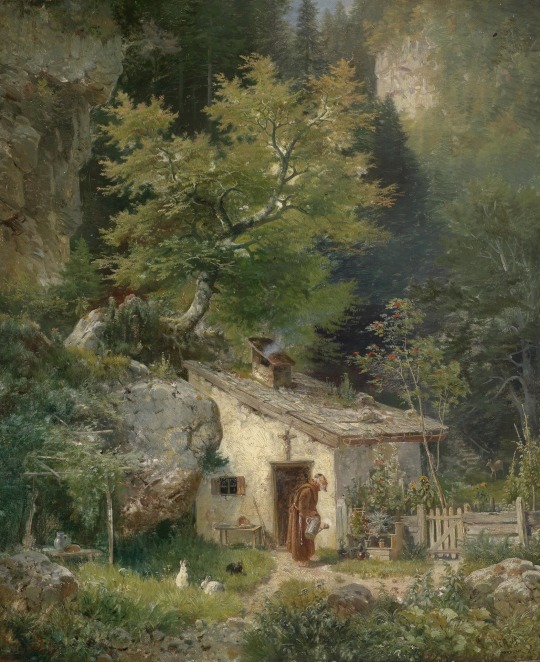
The Hermit by Ludwig Sckell
#ludwig sckell#art#hermit#recluse#der einsiedler#nature#house#cottage#europe#european#rabbits#german#germany#landscape#trees#woods#woodland#forest#chimney#crucifix#cross
1K notes
·
View notes
Photo
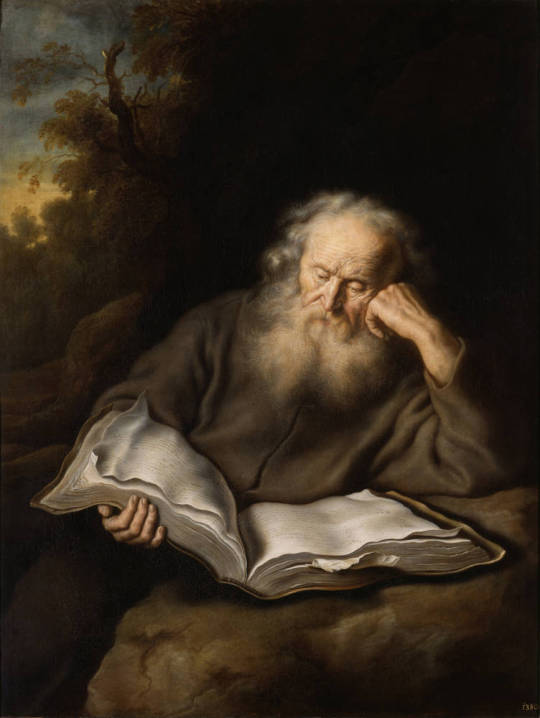





Salomon Koninck, The Hermit (1643) Gerrit Dou, A Hermit (c. 1661) Willem van Mieris, Hermit Praying in the Wilderness (1707) Carl Spitzweg, A Recluse Playing Violin (c. 1862) John Singer Sargent, The Hermit (1908) Ludwig Sckell, The Hermit (c. 1912)
5 notes
·
View notes
Text
Rund um Nymphenburg: Café Paul Isaak am Schlosskanal
Rund um Nymphenburg: Café Paul Isaak am Schlosskanal
Der Nymphenburger Kanal gehört zu den markantesten Sichtachsen Münchens. Im Sommer kann man hier vorzüglich flanieren, im Winter Schlittschuhlaufen – und beides mit Blick auf das Schloss. Gesäumt wird das Kanalufer von den beiden Auffahrtsalleen, der nördlichen und der südlichen, mit ihren herrschaftlichen Gebäuden und Villen. Die Gegend beiderseits des von den Auffahrtsalleen flankierten…
View On WordPress
#Bäckerei Paul Isaak#Café Paul Isaak#Garchinger Mühlbach#Hubertusbrunnen#Konditorei Paul Isaak#Nördliche Auffahrtsallee#Nymphenburg#Nymphenburg-Biedersteiner-Kanal#Nymphenburger Kanal#Nymphenburger Schloss#Olympiasee#Petuelpark#Südliche Auffahrtsallee#Schleißheimer Kanal#Schloss Nymphenburg#Schwabinger Bach#Schwabinger See#Schwarze Lacke#Sckell#Supremo#Ungerer Bad#Würm
0 notes
Text
History of the English Garden in Munich, Germany
This might be a bit long, but I’ve spent so much time looking up the information I figured I might as well post it on the blog in case I lose it.
Creation of Englischer Garten
The creation of the Englischer Garten began in 1777 with the passing of the Elector of Bavaria Maximilian III Joseph who died childless. Because he had no heir, the throne then passed to Charles Theodore, archduke and elector of the Palatinate. Theodore did not immediately take up the crown of Bavaria because he had many illegitimate children who could not inherit Bavaria nor the Palatinate. He prefered his court in Mannheim to the newly acquired territory in which he felt like a foreigner, and he sought land that he could pass on to his children. He tried to exchange part of the land in Bavaria for territory in the Austrian Netherlands but was unsuccessful although he did give away part of lower Bavaria to Austria. Despite being unliked by the citizens of Bavaria, he left a distinctive mark on the city of Munich through the creation of the Englischer Garten.
Theodore was a lover of the arts and spent a great deal of money promoting music and drama at his home in the Palatinate. By comparison Bavaria was undeveloped and had neither an army big enough to defend it nor resources great enough to govern it properly. Agriculture was the people’s way of life and there was little to no industry. Poverty was widespread and beggars made up about a third of the population.
Theodore’s chief military aid was a man named Sir Benjamin Thompson, later Count Rumford; a Loyalist who had fled back to the court of King George III after the American Revolutionary War. Thompson sought to reform the military in order to combat the problems of poverty and unemployment. Soldiers belonged to the lowest class in society and were destined for unemployment as soon as they became too old to serve anymore. Rumford’s idea was to create “military gardens” in order to turn soldiers into useful members of society during peacetimes. In February of 1789, it was decreed that these gardens would teach soldiers agricultural skills such as farming and gardening and would be located in each garrison city.
The very first of the military gardens would later become Englischer Garten. The chosen area for the Munich military garden was the swampy land near the River Isar called the Hirschanger meaning “Deer Park”. This land has been used as hunting grounds since the Middle Ages when it was not flooded. However, because this land was now to be divided up into small garden plots, expensive measures needed to be taken in order to prevent the plains from flooding. A river wall called the Riedl-Damm was constructed to prepare the land for what it is currently being used for today.
Thompson soon began to encourage Theodore to turn the garden into a public park in which the military garden would become only a small part. In August of 1789, the land in the Hirschanger, then known as Theodore’s Park, was devoted to the people of Munich. In spring of 1792 the park officially opened to the 40,000 citizens of Munich. It was one of the first public parks in the entire continent and today is one of the largest city parks in the world, bigger than Central Park in New York City as well as Hyde Park in London.
The Royal Gardener Friedrich Ludwig Sckell who had studied landscape gardening in England was chosen to supervise the development of the project. The park was planted with native trees and designed as an English style garden, hence the name Englischer Garten. It included a model farm, a cattle farm, a sheep farm, an arable farming school, a military garden, an area for arboriculture, several bridges, a Chinese Tower, and a veterinary school to tend to the cattle. Most of these projects quickly died out after the creation of the park but the veterinary school went on to become the Veterinary Faculty of the Ludwig Maximilian University of Munich. The Chinese Tower also still stands though it was rebuilt after being destroyed in a bombing during WWII.
Sckell introduced the concept of English Gardens to German experts through his writings about the style and his work with parks such as the Englischer Garten. He is regarded as the founder of English Gardens in Germany, a style of informal landscaping that separated from the traditional strict geometric gardens that were popular before the 1700’s.
Inspirations for the English garden style stemmed from French landscape painters such as Claude Lorrain and Nicholas Poussain, who depicted idealistic views of nature. There were influences from the East as well through descriptions of Chinese gardens that included winding pathways and irregularly placed rock gardens. Landscape architects like William Kent and Charles Bridgeman channeled these works of art and popularized the smooth lines and serpentine forms that soon replaced the rigid and symmetrical classical French garden as the dominant gardening style of Europe.
The typical English garden was built for a wealthy landowner with a large country estate and included rolling sweeps of green lawn that ran right up to the house, carefully placed groves of trees, a lake, bridges, and architectural structures built to resemble ancient greek temples or gothic ruins. Together it created the ideal pastoral landscape. Lancelot “Capability” Brown brought these scenic garden spaces to the forefront of fashion in the 1750’s through the creation of over 170 different gardens throughout his career. He is known for telling homeowners their estates have great “capability for improvement”. After working under both Bridgeman and Kent, Brown began to simplify the garden style by eliminating geometric structures, alleys and parterres. Parterres were formal gardens built over flat ground and made with planting beds arranged in symmetrical patterns interwoven with paths. These were developed in France and were hallmarks of the gardening style there, which Brown replacing in favor of rolling lawns that broke into expansive views containing belts and scatterings of trees. He sought to make the landscape appear larger and created artificial lakes that used dams and canals to give small streams the illusion of rivers that flowed through the garden.
The English style of gardening was a “gardenless” form of landscaping that was easier and cheaper to maintain than the trimmed topiary gardens that were popular before. Soon the style began to spread throughout the continent inspiring the creation of Munich’s public Englischer Garten.
When Thompson, the creator of the military garden, left Munich in 1789, he was replaced with Baron von Werneck under the continued guidance of the head gardener Sckell. Werneck tried to make the garden pay for itself through agricultural use and farming, but ended up spending more money than he generated. To accomplish his efforts, he doubled the area of the park by expanding it to include an area known as the Hirschau, the place north of the Hirschanger. In 1800, the military gardens were added to the park too along with an artificial lake called the Kleinhesseloher See. The name of the lake takes after the Kleinhesselohe, a gateway at the original northern limit to the park leading to the Hirschau. The park warden had set up a beer shop for the workers of the park by the watch house at the gate, but because passer-bys loved to stop at it the shop was soon expanded to serve milk and cold foods. The improvements made to the park turned out to be very costly, mostly from the changes that needed to be made to turn the Hirschau into farmable land. In 1804 the new ruler of Bavaria, Maximilian IV Joseph made Sckell director of the Bavarian garden system and removed Werneck, who was placed in charge of the corps of cadets and made Major General instead.
Sckell’s original vision for Englischer Garten was to create an uninterrupted expanse that played with light and shadow. He sought to design the park from an artistic sense and focused more on the landscape features rather than agricultural use. Although the garden has continued to change and expand throughout the years, Sckell brought the garden to its current form. By 1812 he increased the size of the Kleinhesseloher by one and a half times feeding it water from the Eisbach, a small artificial arm off of the River Isar. Three islands can also be found in the lake called King’s Island, Elector’s Island, and Regent’s Island. In 1815, an artificial waterfall was created in the Eisbach, or ice stream. Sckell continued to implement designs throughout the park in the image of a beautiful landscape garden until his death in 1823. Today, two monuments by the Kleinhesseloher honor the creators of the lake. One for Werneck, and one for Sckell, which were erected a year after his death.
Throughout the years, many features have been constructed in the park for users to interact with. These elements are largely what keeps the park so widely frequented. Today the park is used for a wide range of recreational activities including jogging, cycling, swimming, yoga, slacklining, skating, surfing, sunbathing, and sports such as volleyball, frisbee, and soccer. The park includes 78 km of pathways, 12 km of which are horse riding paths, 15 km of streams, over 100 bridges, and over 50 species of bird along with hedgehogs, squirrels, foxes, beavers, and rabbits. The total area of the park is 384 ha with 150 ha made of woodland, 187 ha made of meadowland, and 16 ha made of water. There are 4 restaurants and 4 kiosks in the garden, and over 5 million people visit annually.
The park is divided into two portions separated by the Isarring road: the peaceful Hirschau in the north and the livelier garden in the south. In the tranquil north, some of the meadows are grown long and mown for hay while other meadows are used as pasture for sheep. The north has two beer gardens, the Hirschau and the Aumeister. The Hirschau is very popular with the locals since it is separated from the tourist crowds while the Aumeister, which used to be the royal hunting lodge, is very beautiful but often has empty seats because it is at the very north of the garden. There is also an open air theatre in the north where performances are held in the summer. On sunny days, there can be as many people in a medium sized town found gathering in the open lawns of the south garden. Nude sunbathers can be found in the Schonfeldweise or Beautiful Meadow, and have been gathering there since 1960. The south garden is also where many of the famous sights are located such as the Chinese Tower, the Japanese Tea house, the Standing Wave, Monopteros, and the Kleinhesseloher See.
In 1789 a small circular temple, named the Apollo temple after a statue of Apollo was added to it in 1791, was erected in the garden near the Eisbach. The Eishach or Ice Brook is a small man made river and a side arm of the River Isar. The basis of the temple was tuff, a soft rock made from volcanic ash. However, the temple itself was wooden and fell apart by the early 1800’s. In it’s place is the Steinerne Bank or Stone bench, with the inscription “Here where you meander was once only wood and marsh.”
Once the Apollo temple had been replaced, Sckell’s original idea for a hilltop temple was commissioned. A small, round, Greek style temple called the Monopteros reaching 16 meters tall was designed and built on top of a constructed hill. The Hill and temple were finished in 1836. 10 ionic columns support a copper covered dome and the building also displays a polychrome stone painting. Monopteros is a photo favorite and offers a dazzling view of the Munich skyline.
The Chinese tower or the Chinesischer Turm is a 5 story wooden pagoda that is 25 meters tall and 19 meters wide at its base. It was built in 1790 after Rumford became inspired by the Chinese-style pagoda at London’s Kew Gardens. It is made to resemble the beautiful towers found in the gardens of Chinese emperors and was created as a symbol of a good, healthy, and rational rule comparable to the vast empire of China. The view from the tower gave citizens a new look at their overall landscape and enhanced the concept of leisure outdoors to appreciate nature; an idea which was still new at this time. Today, the Chinese tower beer garden is the second largest beer garden in Munich. It seats over 7,000 people at a time in benches arranged around the tower. Food stalls offer traditional beer garden foods such as fish on a stick or roasted chicken and horse drawn carriage rides through the park are offered at the entrance to the beer garden.
A past time at the tower that still takes place on the 3rd Sunday of July is the Kocherlball. During the late nineteenth century, about 5000 servants, laborers, soldiers, and students would come to the tower on Sunday mornings to dance to a brass band at 5am. The dance would end around 8 am so that everyone could return to work. It became known as the “Kocherlball” or the “Cooks’ Ball” and was forbidden in 1904 due to moral concerns. However in 1989 a the dance was revived to celebrate the 200th anniversary of the park. About 4000 people attended wearing historical Bavarian costumes and it is now celebrated every year on the 3rd Sunday of July from 5:30 am to 10:00 am.
To the south of the Chinese Tower stands the model farm called the Economy buildings. These were built near the end of the 18th century at the beginning of the parks creation. Today these buildings are occupied by the management of the garden as the farm is no longer in use.
Also near the Tower is a children’s carousel built in 1823. The Carousel was designed not only with horses to ride, but also with ibex, stork, and flamingo.
To the north of the tower stands a small Palladian building, constructed in an architectural style inspired by Venetian architect Andrea Palladio. The style is based off of symmetry, perspective, and the temples of ancient Greeks and Romans. Originally built in 1791 as an officer’s casino to be used by the army, it was later renamed the Rumford House named after the garden’s founder, Benjamin Thompson or Count Rumford. The dining hall, which can fit 150 people, earned the name Spiegelsaal or Mirror Room because it is adorned with mirrors. Today it is used as a cultural meeting place and learning center for children.
Located near the center of the park is the Kleinhesseloher See. Built in 1800 under Wernick and later improved by Sckell, the lake is a popular spot for visitors and offers pedal boats. Although, swimming is not technically allowed, visitors can often be found swimming in one of the many streams in the park. The small beer garden set up by the park warden eventually became the Seehaus or Lake House restaurant. It seats 2,500 people and was built in 1883 as a boathouse with food service. This was redesigned in 1935 with a terrace and then rebuilt again in 1985 with high ceilings, round arches, and a diversified atmosphere. It includes a restaurant, a beer garden, a banquet room, a conference room, and a pavilion by the lake. They also do cocktail parties, birthdays, and weddings.
The lake is constantly being fed water from the man made Eisbach or Ice Brook. Just past the bridge near the Haus der Kunst art museum at the very South end of the Garden, the river forms a standing wave about 1 meter high produced by a water pumping mechanism. This is popular surfing spot, but is very difficult to ride and should only be used by experienced surfers. Surfers have come there since 1972 and competitions have even been held there. The Summer Olympics of 1972 held an archery tournament on the Werneckwiese by the Kleinhesseloher See, an informal open meeting space used for football.
Also created in 1972 was the Japanisches Teehaus. This was added to the park in celebration of the summer Olympics of 1972. A Japanese garden was created with the teahouse on a small island in a pond near the art museum at the south entrance to the garden. The teahouse was gifted to Bavaria by Soshitsu Sen, a tea house master from Kyoto. This gift was given on one requirement, that the Japanese tea ceremony be taught and demonstrated. Traditional tea ceremonies still take place there, hosted by an authentic tea master that visitors can take part in. There is also a tea club that seeks to expand knowledge of the culture to the public.
The Englischer Garten extends from the edge of the Hirschau in the north at Emmeram bridge over the Isar River down to Maximilian Park, the Court Garden, and the Finance Garden in the south by the museum to the Royal Residence. When these areas are included the total area of the park expands to 427 ha. The park is enormous, as well as enormously popular, and Bavaria currently invests 2.7 million euros annually into its maintenance.
Links:
City Trees: A Historical Geography from the Renaissance Through the ...By Henry W. Lawrence https://books.google.com/books?id=He2WfcVi58sC&pg=PA142&lpg=PA142&dq=favorite+trees+from+englischer+garten+munich&source=bl&ots=Aoe4f-eAdF&sig=QLFagsPPtR3nOxnfuFnyvI2-Hrg&hl=en&sa=X&ved=0ahUKEwjZov6kxfPTAhVERCYKHadtA9gQ6AEITzAK#v=onepage&q=favorite%20trees%20from%20englischer%20garten%20munich&f=false
http://www.muenchen.de/sehenswuerdigkeiten/orte/29935.html
http://www.munichbeergardens.com/Chinesischer_Turm
https://www.revolvy.com/main/index.php?s=Charles%20Theodore,%20Elector%20of%20Bavaria&item_type=topic
https://www.muenchner-stadtmuseum.de/en/sonderausstellungen/archive/2014/rumford-recipes-for-a-better-bavaria.html
https://www.revolvy.com/topic/Englischer%20Garten&item_type=topic
http://www.aviewoncities.com/munich/englischergarten.htm
https://www.revolvy.com/topic/Englischer%20Garten&item_type=topic
T. Dombart, Der Englische Garten zu München. Munich: Hornung, 1972. ISBN 3-87364-023-6
https://www.revolvy.com/topic/Capability%20Brown&item_type=topic
http://www.metmuseum.org/toah/hd/gard_3/hd_gard_3.htm
http://germanculture.com.ua/travel-to-germany/english-garden-in-munich/
http://www.buergerpark-muenchen.de/index.php?id=3
https://en.wikipedia.org/wiki/Reinhard_von_Werneck
http://www.schloesser.bayern.de/englisch/garden/objects/mu_engl1.htm
http://visit-munich-bavaria.com/englischer-garten-english-garden
http://www.kuffler.de/en/seehaus.php
https://www.lonelyplanet.com/germany/munich/attractions/englischer-garten/a/poi-sig/409152/1320849
http://www.guiddoo.com/munich-travel-guide/unwinding-at-the-englischer-garten
http://www.urasenke-muenchen.de/pages/teehaus/
0 notes
Text
Monopteros


Monopteros ⋆ Englischer Garten ⋆ München ⋆ Park
Monopteros ⋆ Englischer Garten ⋆ München ⋆ Park
Der Monopteros im Englischen Garten zu München ist ein Rundbau mit Säulen, der keinen geschlossenen Innenraum besitzt. In der Antike dienten Monopteroi als Baldachin für ein Kultbild. Der Englische Garten selbst ist eine 375 ha große Grünanlage im Münchner Nordosten am Westufer der Isar und gehört zu den größten Parkanlagen der Welt. Die Bezeichnung rührt von den englischen Landschaftsgärten her, die von Friedrich Ludwig von Sckell bei der Gestaltung des Geländes zum Vorbild genommen wurden. Der Monopteros, ein etwa 16 Meter hoher Rundtempel im klassizistisch-griechischen Stil, wurde nach einem Entwurf von Leo von Klenze aus Kelheimer Kalkstein errichtet und 1836 fertiggestellt. In den 1960er Jahren entwickelte sich der Hügel des Monopteros als Treffpunkt von Alternativen, Kleinkünstlern, Hippies und Gammlern und trug dazu bei, den Englischen Garten über die Grenzen Münchens hinaus als Symbol zunächst der Gegenkultur und später auch der bunten Weltoffenheit bekannt werden zu lassen. Monopteros ⋆ Englischer Garten ⋆ München ⋆ Park Read the full article
0 notes


